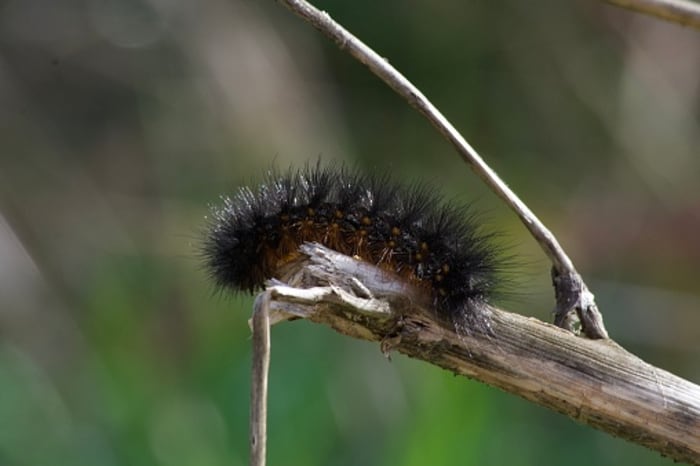
HOUSTON – Springtime in Houston brings not only allergies and rainy weather, but also an abundance of insects and bugs that make their way into our homes, patios, and sidewalks. One particular creature that has caught the attention of many is the black fuzzy caterpillar, also known as a woolly bear caterpillar.
Recommended Videos
What is a woolly bear caterpillar?
A woolly bear caterpillar, also known as a fuzzy wuzzie or a woolly worm, is a species of caterpillar covered in hair or setae, giving them that distinct fuzzy appearance.
Two types of woolly bear caterpillars that can be found in Texas are the saltmarsh caterpillar and the garden tiger moth caterpillar. The saltmarsh caterpillar can vary in color from black to brown to yellowish, whereas the garden tiger moth caterpillar has a black top and a brown bottom that is covered in fuzz.
Are woolly bear caterpillars poisonous?
If you’re anything like me, when you spotted these caterpillars you immediately thought to yourself, ‘Get far away. Don’t touch.’ Because, at least speaking from personal experience, we have always been told these little caterpillars could sting or were poisonous.
However, it is important to clarify that neither the saltmarsh caterpillar nor the garden tiger moth caterpillar is poisonous or capable of stinging.
Can they really predict winter?
I’m not sure if you’ve ever heard the myth that woolly bear caterpillars are supposed to predict the severity of the winter, but according to scientists and several studies, they do not.
Some believe that the brown band on the caterpillars versus the black will say how severe that winter will be. The larger the band, the more severe the winter. No relationship has been found between woolly bear prickle patterns and the severity of oncoming weather.
Although their complexions have nothing to do with predicting the weather, they do have meaning.
Woolly bear caterpillars shed their exoskeletons six times before becoming moths. Each time they molt, they become more rusty in color and less black. This means that the youngest caterpillars are usually all black, while more colorful caterpillars are the older individuals. Additionally, there may be connections between a woolly bear’s appearance and the climate. Color patterns could indicate when a caterpillar last molted, which could potentially reflect weather and temperature trends. Caterpillars with more black coloration would theoretically absorb more sunshine.
So, although black fuzzy caterpillars may frightening to stumble upon, there is no need for concern about their potential harm. They are harmless creatures that go through natural transformations as part of their life cycle in Houston in springtime.
Have you spotted a woolly bear caterpillar this spring? Drop a picture at Click2Pins!

